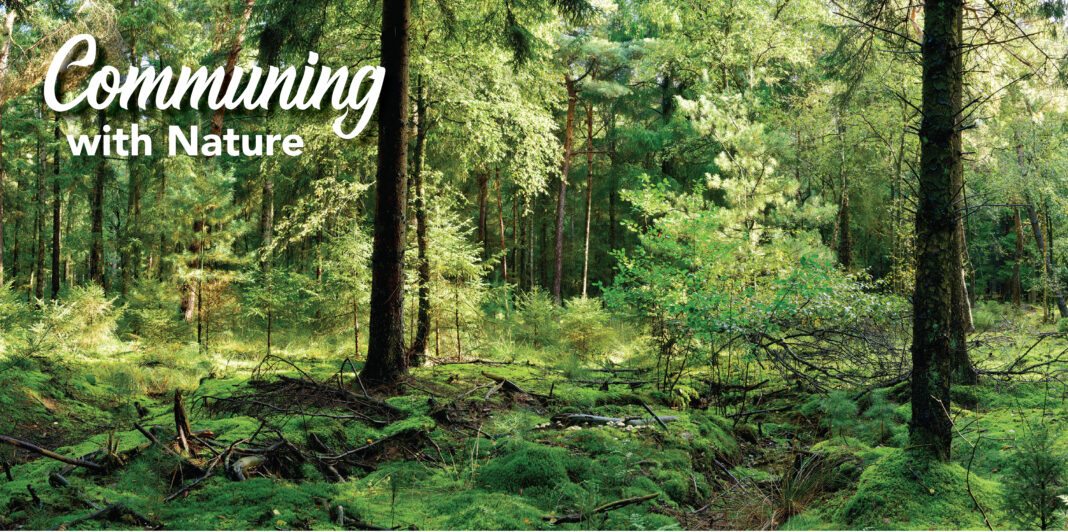Communing With Nature: The herons and egrets, and in fact all birds, are descended from Tyrannosaurus Rex
Nearly extinct at the beginning of the 20th Century because their feathers were so highly sought after, Great Blue Herons (Ardea Herodias) and Great Egrets (Ardea alba) have rebounded fully.
For me, the sight of these elegant birds rising from a wetland evokes thoughts of the largest flying dinosaur, pterodactyl. But no. The herons and egrets, and in fact all birds, are descended from Tyrannosaurus Rex. They all share very similar skeletal features.
Here’s another surprise, egrets are herons, but not all herons are egrets! Only the great egret and great blue are in the same heron family.
How are they similar?
Both are wading birds with long legs and necks
Prefer the same habitats – wetland, coastal, and freshwater environments.
Solitary feeders, they are primarily fish-eating birds with long, pointed beaks for spearing their prey.
Found across most of the Americas, Europe, Southern Asia, and Africa
How are they different?
Coloration: Great blue herons are mostly blue gray with white and black markings, while great egrets are entirely white. A white subspecies of the great blue heron called the great white heron, is much larger than the great egret and has a yellow bill.
Size: Great blue herons are slightly larger and stockier than great egrets, standing 36 to 54 inches tall, while white egrets are closer to 40 inches tall. A very small size difference between male and female of each bird type is the only visual clue to the sex.
Flight: Great egrets fly with their necks outstretched, while the great blue pulls its neck close to its body, slowly flapping their nearly 6-foot wingspan.
Breeding Habits: Great blue herons build large stick nests high in trees, while great egrets nest in colonies, often with other wading birds, in trees or bushes.
Posture: Great blue herons position their necks in an S-shape when they are standing. Great egrets hold their necks straight up.
Breeding Plumage: Great egrets show decorative plumage on their heads and backs during the breeding season and perform elaborate plumage shows.
Diets: Great blue herons like variety in their diet, preying on fish, frogs, snakes, small mammals, and even birds. Great egrets stick primarily with fish.
Both birds are social nesters, but egrets breed in busy, noisy, crowded places with hundreds or even thousands of nests in colonies or rookeries! A small island in the middle of Claybottom Pond at Smith Sanctuary on High Island, TX is filled with herons, egrets, cormorants and spoonbills. They all nest on the island which is covered with scrub bushes. It is a feast for the eyes.
Although they often choose the tallest spots for better views of the surrounding area, both adapt if necessary, nesting on shrubs, bushes, or even on the ground. Great blue herons have even been known to use human-made structures like abandoned buildings or nesting platforms if available.
Males arrive first and begin building nesting platforms made of sticks and twigs. The female weaves the sticks together and gathers leaves, moss, or grasses to create a soft hollow for the eggs, generally 2 to 4. Nests have been seen up to 4 feet in diameter for great blue herons that reuse their nests over multiple years.
Once the eggs are laid, both parents share incubation and feeding the chicks after they hatch. Only as chicks exhibit much aggression, often attacking and eating the weakest hatchlings. They fledge (learn to fly) when they achieve their full size, in about 6 weeks and then take a while longer to become fully independent. Full plumage takes a year to develop. If you see what looks like a small great blue, it’s generally a little blue heron.
The next time you spot either one, or both, spend a few minutes enjoying their focus, attention, and beauty.
For more information visit Piney Wood Lakes Chapter of Texas Master Naturalist, serving members across Polk, San Jacinto, Trinity, and Tyler Counties with volunteer opportunities, educational resources, and conservation projects. txmn.org/pineywoodlakes SJC Master Gardeners serves members in San Jacinto and Polk County. Life-long learners and trained volunteers, master gardeners give time, knowledge, and expertise to improve the quality of life for neighbors and visitors. txmg.org/sjmg















